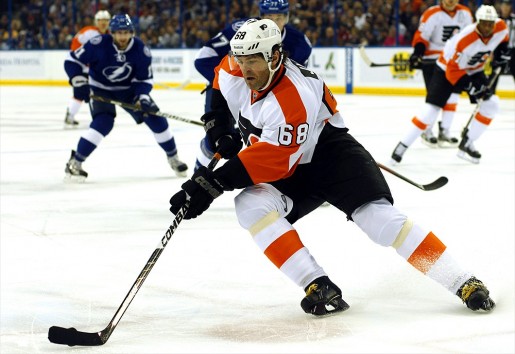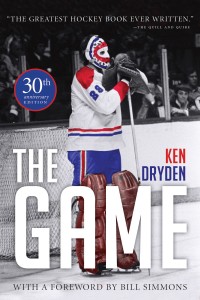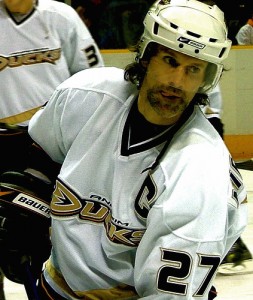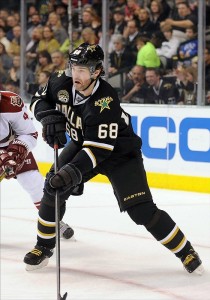Back in October we all saw Sidney Crosby do this to fellow Cole Harbour denizen Nathan MacKinnon:
Crosby’s deke is all footwork. MacKinnon bites hard. It’s a crafty, veteran move that only a good skater can pull off.
As part of The Hockey Writers draft team, I often hear about skating ability from scouts. It tends to be the first thing they look at, although, as Shane Malloy writes in The Art of Scouting, that doesn’t mean they all agree on its importance from the scouting perspective. This is in part because, unlike size, skating is a skill which players can improve.
Since August, I have been suffering from JJRA, or Jaromir Jagr Retirement Anxiety. I’ve come to believe that his decision to retire from hockey, when it comes, will somehow be the clarion call of my own mortality. Therefore most anything hockey-related right now redirects me to Jagr. So I wondered: Perhaps throughout the 1700+ NHL points, the take-you-out-of-your-seat stickhandling, the jaw-dropping dekes and sensational goals, maybe Jagr’s skating skills had been overlooked.

Jaromir Jagr the Skater
The great Eddie Johnston once echoed a sentiment expressed by everyone from Mario Lemieux to Scotty Bowman when he said that he didn’t know of any player who was stronger on his skates than Jaromir Jagr. One on one, there has never been a player so dangerous.
For instance, in collecting his 1,723rd career point, an assist on an Adam Henrique goal, Jaromir Jagr victimized Nick Grossman in classic Jagr fashion: Fast hands, long reach, hockey sense. And all of it powered from, made possible by, his skates:
After watching video both new and old, I concluded that for all the spectacular goals Jagr has scored, almost none of them would be possible were he anything short of one of the very best skaters in the game.
To determine whether I was right or whether I had lost all perspective, I appealed to the expertise of a renowned skating instructor.
The Birth of Power Skating
In his seminal book The Game, Ken Dryden argues that one main reason the Montreal Canadiens of the late 1970s overcame the dirty play of the Philadelphia Flyers and won four straight Stanley Cups was due to their team speed. He wrote that coach Scotty Bowman understood better than most that
… speed is disorienting … like an old man in a thirty-year-old’s world, it robs an opponent of coordination and control, stripping away skills, breaking down systems, making even the simplest tasks seem difficult.
In 1971, the New York Rangers approached local figure skating coach Laura Stamm about running power skating classes at their summer camp. Two years later, Islanders GM Bill Torrey asked Stamm to make a better, faster skater out of promising draft pick Bob Nystrom, who had spent most of his first pro season in the minors. In the summer of 1973, the two met every morning for one hour, five days a week, for eight weeks. The following season, Nystrom emerged as one of the league’s top rookies; he grew into a top two-way forward and key cog in the dynastic years of Islanders hockey. For Stamm, this led to more work with the Rangers, Devils, and Kings.

These were the seeds of what she would develop into what is known today as the Laura Stamm International Power Skating System, a skating program today taught across North America and Europe, to skaters of all ages in countries as far-flung as Iceland. It helps hockey players learn to skate faster, with more power, mobility, greater balance, and with an overall superior technique. Famous graduates of Stamm’s system include Luc Robitaille, Brian Rafalski, Rob Niedermayer, Matt Carle, and hundreds of other pro hockey players, not to mention a player regarded by many as one of the finest skaters the game has ever seen, Scott Niedermayer.
If anybody could talk to me about Jagr’s skating ability, it was Stamm. As it turns out, she has been praising Jagr as a skater almost since the Kladno Kid came to Pittsburgh in the early 1990s.
“I used to tell students to notice how low Jagr skated,” she tells me over the phone from New York, on the eve of a massive snow storm. “His knees were bent so low that his head would be almost level with the dasher.”
Indeed when he was younger, Jagr’s knees are bent to at least a 90 degree angle, allowing him powerful strides and giving him uncommon speed for a player his size (6′ 3″ and 225 lbs).

“When I got started, skating skills weren’t valued in hockey,” says Stamm. Played like it was in North America into the 1970’s–strictly north-south, with wingers rarely venturing between the face-off dots, defensemen not joining the rush– pro hockey didn’t demand much in the way of skating technique. “There were very few truly great skaters, outside of Bobby Orr and Yvan Cournoyer.”
That began to change, influenced by the weaving style of play introduced by the Soviets and brought to North American audiences in the Summit Series.
A Closer Look
I emailed Stamm links to some Jagr highlights and she singled out a few of them, including this one, in which Jagr takes Rangers rookie defenseman Mike Mottau to school. Stamm pointed out Jagr’s extraordinary balance in this clip, how despite everything he does, his torso barely moves:
The same holds true in this clip, where Jagr almost too easily undresses Joe Juneau:
In fact, Jagr’s stride, his balance in turns– evident by the way he keeps his inside shoulder high– and his low profile, are elements of the power skating technique pioneered by Stamm, although Jagr was not a student. Said Stamm, “I didn’t know it when I first got started, but I was teaching the European method of skating without ever having seen European hockey.”
Finally, there is this clip, perhaps Jagr’s most famous goal. But instead of focusing on Jagr’s two moves around the Blackhawks right before his backhand, focus on the three seconds between Jagr intercepting Brent Sutter’s clearing attempt at :33 and his dangle past Sutter at :36 (at 1:20 a slow-motion replay gives a different angle):
http://youtu.be/haUnOekLbp0
Not only does he deke around Dirk Graham and maintain his balance as Graham tries to trip him, he manages to keep control of the puck in the space of a broom closet by executing at least four subtle moves using his feet alone to freeze Sutter and position himself to get around him. And that’s all before he makes the two moves that the clip is so famous for.
Better Than You Think
Of course, you don’t have to be a great skater to produce. Case in point, Dave Andreychuk. Another, less convincing case in point, is Wayne Gretzky.
“Gretzky skated with a hunch,” said Stamm. “So he wasn’t a great skater, no. But he was better than you think.”
This comment reminded me of what Bobby Orr said about Gretzky: “He’s not real fast but he’s faster than you think. He doesn’t have Bobby Hull’s shot but it’s better than you think.”
Jagr may not be as smooth a skater as, say, Paul Coffey, but he’s smoother than you think. He may not be as fast as Scott Niedermayer, but he’s faster than you think, even at 41. He may not be the greatest skater of all time, but he’s much, much higher on that list than you think.